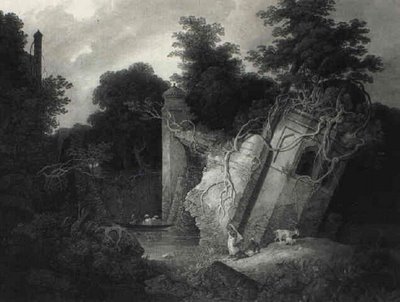

Postogola/Millbarrack is seen in the background

Photo of Pagla bridge ruins by Hoffman in 1880's

from the book of prof Muntasir Mamun


A temple land of 'Pagalnath' is slowly expanding over the bridge site
Pagla Bridge: The bridge and a fort was constructed by Subahdar Mirza Moula (Mir Jumla) in the 1660's on the river Pagla, a former course of the Dulai river, about 5 miles to the east of Dhaka on the road to connect Narayanganj for the defense of Dhaka from the east. Tavernier noticed it in 1666 as a fine brick bridge. While visiting Dhaka in 1824, Bishop Heber found the Pagla Bridge in a fairly good condition and identified it as a very fine specimen of rich architecture. The bridge consisted of three open arches, each being four-centered and stilted, and two blind arches at its two ends. The spandrels of the arches were decorated and bases provided with semi-circular cut-waters. But of great importance were the bridge's four octagonal hollow towers, one at each corner with arched openings, deep panels and fluted dome. The site is now under adverse occupation of a temple.

sketches of Tantibazar bridge ruins by Charles D'Oyly in 1830's
Tantibazar bridge: Tantibazar area is located east of Bangshal of Dhaka city. ‘Dholai khal’ canal was excavated in 1608-1610 by Islam Khan, the first Mughal Subedar of Dhaka from Balu River to protect the city, as well as to provide internal communication passed through this area. The canal flowed through the heart of the old town, and joined the Buriganga river near the Mill Barrack. The bridge was built during Mughal period to facilitate passage over the canal. Ruins of bridge no longer exist.

Bridge at unknown place

Tungi bridge ruins. Sketch by Charles D'Oyly (1781-1845)

Tungi bridge in ruins. Photo taken by Johnston and Hoffman in the 1880s.
Tungi Bridge: When Dhaka was the Mughal seat of Govt of government and at the zenith of its grandeur, this bridge on river Turag with a defensive fort was built by Subahdar Mir Jumla (1660-1663) at Tungi. This was the northern limit of Dhaka some fifteen miles away from the Buriganga river.

No comments:
Post a Comment